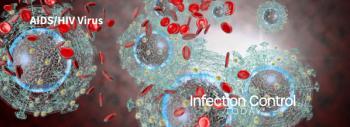
Social Avoidance Behaviors were Prevalent in H1N1 Epidemic
During the SARS pandemic in Hong Kong, panic and worry were prevalent in the community and the general public avoided staying in public areas.
During the SARS pandemic in Hong Kong, panic and worry were prevalent in the community and the general public avoided staying in public areas. Such avoidance behaviors could greatly impact daily routines of the community and the local economy. A
Lau and colleagues recruited a sample of 999 respondents in a population-based survey. Using random telephone numbers, respondents completed a structured questionnaire by telephone interviews at the 'pre-community spread phase' of the H1N1 epidemic in Hong Kong.
The researchers found that 76.5 percent of the respondents currently avoided going out or visiting crowded places or hospitals, while 15 percent were significantly worried about contracting H1N1 and 6 percent showed signs of emotional distress. Females, older respondents, those having unconfirmed beliefs about modes of transmissions, and those feeling worried and emotionally distressed due to H1N1 outbreak, were more likely than others to adopt some avoidance behaviors. Those who perceived high severity and susceptibility of getting H1N1 and doubted the adequacy of governmental preparedness were more likely than others to feel emotionally distressed.
The researchers concluded that the prevalence of avoidance behaviors was very high. Cognitions, including unconfirmed beliefs about modes of transmission, perceived severity and susceptibility were associated with some of the avoidance behaviors and emotional distress variables. They emphasize that public health education should therefore provide clear messages to rectify relevant perceptions.
Reference: Lau J, Griffiths S, Choi KC and Tsui HY. Avoidance behaviors and negative psychological responses in the general population in the initial stage of the H1N1 pandemic in Hong Kong. BMC Infectious Diseases 2010, 10:139doi:10.1186/1471-2334-10-139
Newsletter
Stay prepared and protected with Infection Control Today's newsletter, delivering essential updates, best practices, and expert insights for infection preventionists.






